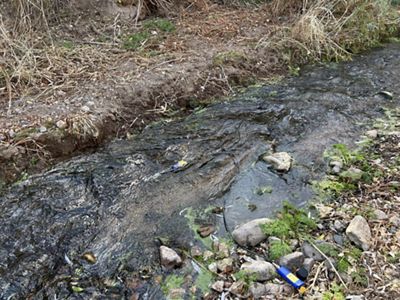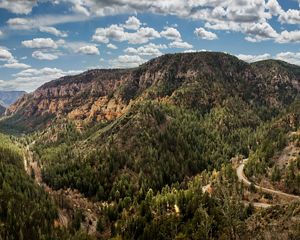Sonoita Creek: Investigating Water Quality & Quantity
Protecting nature starts with science.

Voices From the Field
Water in a desert region means life. It’s intrinsically important to protect and understand perennial sources of water like Sonoita Creek. This work requires us to work across boundaries with a wide diversity of partners because water connects us all. -Aaron Mrotek, Patagonia-Sonoita Creek Preserve Manager
Project Objective
The Nature Conservancy’s (TNC) first nature preserve in Arizona, the Patagonia-Sonoita Creek Preserve, is an ecological treasure—and now is the focus of various freshwater science projects. Part of the Santa Cruz Watershed, the creek’s riparian corridor is a biodiversity hotspot, the nucleus of a place-based economy, and a key wildlife migration corridor in southeastern Arizona and northern Mexico. While TNC’s preserve protects valuable aquatic and riparian habitat, the area’s vital water sources remain at risk. With new and evolving impacts from climate change and groundwater withdrawals, Dr. Jessie Pearl, with TNC’s Arizona science team, is investigating Sonoita Creek source waters using water chemistry and hydrologic modeling. Her goal is to develop a dataset and analysis that helps TNC and partners understand water sources, identify vulnerabilities, assess the impacts of conservation efforts and inform future decisions about water use and management in this region.
WATCH: Freshwater Science in Action
The Need to Solve a Freshwater Mystery
TNC’s Patagonia-Sonoita Creek Preserve encompasses the start of the longest perennial reach of Sonoita Creek, just outside of the town of Patagonia. The preserve boasts pristine water, a healthy aquatic ecosystem and the riparian forest is one of two forests in Arizona recognized by the Old Growth Forest Network. Yet we lack clear information about the source and vulnerability of the creek’s water, which is the lifeblood of the preserve and surrounding areas. The Patagonia Mountains, which border the eastern edge of the creek, have complex geology that muddies our understanding of the surface and underground water flow path from the summit to the creek. Further, water flow path from the nearby Santa Rita mountains and surrounding basin is impacted by climate and land use change. What we do know is that this water system is changing—and fast. Prior to the late 20th century, Sonoita Creek was perennial along most of its length. Today, after decades of impacts from agriculture, mining and the increasing effects of climate change, only half of the creek miles are perennial. New potential impacts to the creek’s water sources are emerging in the form of imminent mining activity planned for the Patagonia Mountains. The mining operations involve pumping deep groundwater, treating the pumped water and releasing the effluent into Harshaw Creek, a tributary to Sonoita Creek located upstream from TNC’s preserve.

Progress & Opportunity
Using TNC’s preserve as an outdoor laboratory, Dr. Pearl and her team began analyzing water quantity, quality, and bio-indicators like fish composition and macroinvertebrates (water bugs!), to identify seasonal changes and trends, and to reveal their relationships to Sonoita Creek’s water availability. Thanks to coordination with preserve staff, citizen scientists from Friends of Sonoita Creek, volunteers, the South32 mining company and partner organizations, the team created a comprehensive hydrologic dataset that allows us to identify the principal source water for the preserve, determine key climate drivers and quantify the impacts of groundwater withdrawals and conservation efforts in the watershed.

Ongoing monitoring will be crucial. Dr. Pearl’s research established thresholds of water quality and flow that will allow us to detect critical changes in water that will impact the local ecosystem.
This collaborative effort demonstrates the power of community drive, local stewardship and how objective scientific pursuit can help form relationships with industry and partner conservation organizations. Armed with robust hydrological data, TNC and local partners can devise new and more effective strategies to keep this creek flowing—and to benefit the nature and communities it sustains.


